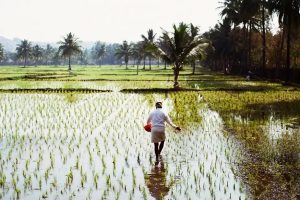Creating Meso Insurance Solutions: Issues and Challenges

Image by Oleh_Slobodeniuk on iStock
In the previous blog of this series, we discussed the potential use case for introducing meso-level insurance in agriculture with Farmer Producer Organizations (FPOs) as risk aggregators and policy holders. Through insights from our ongoing research, we identify that there are several supply and demand-side difficulties in creating a vibrant and sustainable market for a new insurance product in the long run. In this blog, we highlight three such potential barriers that a meso-level agricultural insurance product must overcome through both, better product design and a stronger value proposition for its intended beneficiaries:
-
- First, the quality of protection for last-mile beneficiaries obtained from any index-based insurance product is difficult to discern. While index insurance is often promoted as an affordable alternative to conventional insurance in developing countries, its value for farmers in terms of design(covering appropriate activities and appropriate risks), distribution (providing adequate information on product details and features) and delivery (through adequate monetary coverage and reaching the most marginalized sections) is rarely assessed. This lack of a strong value proposition discourages groups of smallholder farmers from subscribing to insurance products. This also has a bearing on the incentive for private insurance providers to invest in a new insurance product. Moreover, the systemic component of agricultural risks can generate major losses in the portfolio of agricultural insurers. Though public intervention is justified because no private reinsurer or pool of reinsurers has the capacity to cover such a large liability when the risks, even though small, may be difficult to diversify — it becomes important to actively encourage private insurers to supply insurance in this sector. To combat this issue, insurance regulators, IRDA in the case of India, will have an important role to play in ensuring that minimum product standards are in place and to ensure that these are enforced.
-
- Second, despite the efforts of successive governments to provide affordable agricultural insurance to marginalized and vulnerable populations, the pricing of index insurance in most emerging markets still appears to be high. This also highlights the need to explore more effective ways of providing insurance. A Meso-level insurance product can solve the issue of high pricing as in this context, it is the aggregator, be it an FPO or agri-processing firm or any other institution, that will be purchasing the insurance rather than the individual, which has the potential to drive costs down in terms of assessing individual risks. However, there are also challenges in terms of contract design which ensures adequate benefits are passed on from aggregators to the final-mile beneficiaries, i.e. smallholder farmers.
-
- Third, the lack of effective technology to address the above issues has been emphasized from time to time by various sector experts. This also suggests that there is a significant opportunity for agri-technology to be a game changer in the agricultural insurance industry. Technology solutions that simplify enrollment, loss assessment and claim settlement for meso-level insurance products would need innovative approaches and funds directed towards developing these solutions. Governments and regulatory institutions such as IRDA in collaboration could lead the efforts and incentivize technological solutions through a dedicated innovation fund. The collaborations can draw inspiration from the success of agencies such as the National Payments Corporation of India (NPCI) that have taken notable strides in enabling widespread and secure adoption of digital payments. Among the key factors that have facilitated the success of NPCI, have been innovations that have drawn from actual user experiences in digital transactions. New agri-tech solutions can enable all stakeholders, i.e, insurance providers, agri-companies, governments etc. to recalibrate their roles and provide an efficient and sustainable solution that in turn enables farmers to mitigate and manage risks in agriculture.
As the frequency and intensity of weather-related shocks (that adversely affect agriculture based livelihoods) continue to grow, so does the risk that more households will live their lives in increasing poverty. This raises the stakes for addressing poverty, food security and vulnerability through resilience-based social protection programs; with innovative insurance-based products acting as an important cornerstone in such an approach.
This research was developed as part of the Bharat Inclusion Research Fellowship.
